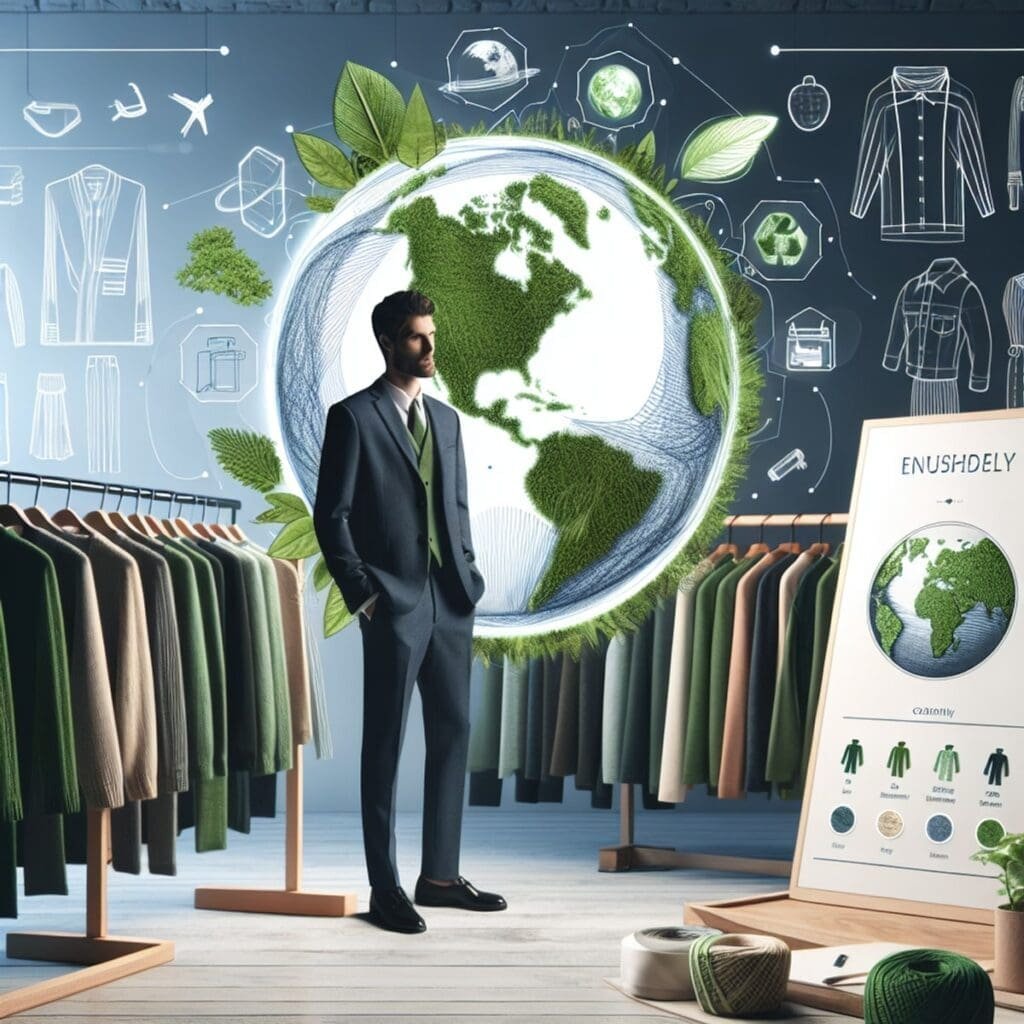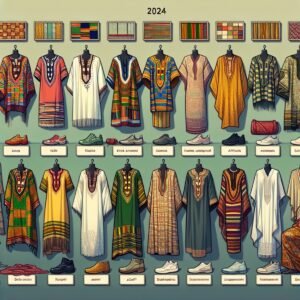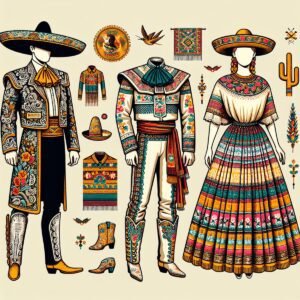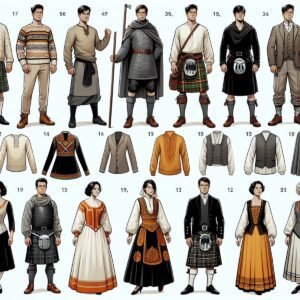
Introduction to What Is Eco-Friendly Clothing
Eco-friendly clothing, also known as sustainable fashion, is changing the fashion industry. It involves using ethical and environmentally friendly methods to reduce the harm caused by making clothes. As people become more aware of their impact on the environment, they are looking for sustainable fashion options. This change shows that more and more people understand the value of supporting eco-friendly brands that prioritize sustainability.
Understanding Eco-Friendly Clothing

Eco-friendly clothing refers to clothes that are made with environmentally friendly materials and production methods. It supports sustainability and environmental responsibility by focusing on:
- Sustainable Materials: Using organic cotton, hemp, bamboo, and recycled fabrics to reduce harm to the environment.
- Ethical Production: Following fair labor practices, ensuring safe working conditions, and minimizing carbon emissions during manufacturing.
- Reduced Chemical Usage: Limiting the use of harmful dyes, chemicals, and water in the production process.
- Biodegradability: Creating garments that can naturally break down without leaving behind harmful substances.
The goal of eco-friendly clothing is to lessen the negative impact of the fashion industry on the environment and encourage a more balanced relationship between fashion consumption and nature.
The Importance of Embracing Eco-Friendly Clothing

Eco-friendly clothing is crucial in reducing the negative effects of the fashion industry on the environment. Fashion is one of the biggest contributors to pollution worldwide, with high levels of carbon emissions, water pollution, and waste production. Here’s why embracing eco-friendly clothing matters:
- Reducing Carbon Footprint: Conventional clothing production relies heavily on fossil fuels, which leads to increased greenhouse gas emissions. Eco-friendly clothing focuses on using sustainable materials and manufacturing methods that minimize carbon emissions, thus helping to fight against climate change.
- Conserving Resources: Traditional textile production requires large amounts of water, energy, and chemicals. By choosing eco-friendly clothing, we can lower the demand for these valuable resources while promoting more sustainable options such as organic cotton or recycled polyester.
- Preserving Biodiversity: The use of pesticides and fertilizers in conventional cotton farming contributes to soil degradation and water pollution, causing harm to ecosystems and wildlife. Eco-friendly clothing encourages organic farming practices that prioritize biodiversity conservation.
- Supporting Ethical Practices: The fashion industry has a history of unfair labor practices, including low wages and unsafe working conditions. By opting for eco-friendly clothing, consumers can show their support for brands that prioritize fair wages, safe workplaces, and ethical supply chains.
- Promoting Circular Economy: Eco-friendly clothing follows the principles of a circular economy by emphasizing durability, recyclability, and upcycling. This approach aims to prolong the lifespan of garments and reduce textile waste by keeping materials in use and minimizing landfill disposal.
Through our choices of eco-friendly clothing, we can make a positive difference for both the environment and society as a whole. It is only by working together that we can bring about significant changes in the fashion industry towards a more sustainable future.
Characteristics of Sustainable Clothing

Sustainable clothing has specific qualities that make it environmentally friendly and produced ethically. Here are some of the main characteristics:
- Use of organic materials: Sustainable clothing often uses organic fibers like organic cotton, hemp, bamboo, and linen. These materials are grown without synthetic pesticides or fertilizers, which helps reduce harm to the environment.
- Incorporation of recycled materials: Ethical fashion brands prioritize using recycled fabrics and materials. This helps reduce waste and promotes a circular economy where resources are reused.
- Ethical production practices: Sustainable clothing is made using fair labor practices. This means ensuring safe working conditions and fair wages for all workers involved in the production process.
- Minimal impact on the environment: Sustainable clothing takes steps to minimize its environmental footprint. This can include using dyeing techniques that use less water and chemicals, as well as opting for carbon-neutral shipping methods.
By having these qualities, sustainable clothing reflects values of taking care of the planet and being aware of social issues. It gives consumers a chance to make conscious choices in supporting a more sustainable fashion industry.
Understanding the Difference Between Eco-Friendly and Conventional Fashion

When it comes to fashion choices, it’s important to understand the differences between eco-friendly fashion and conventional fashion. By choosing eco-friendly options, you can make a positive impact on the environment and support sustainable practices in the fashion industry. Here are some key differences and benefits of choosing eco-friendly fashion over conventional alternatives:
- Sustainable Materials: Eco-friendly fashion uses organic or recycled materials like organic cotton, hemp, or Tencel. These materials are grown without harmful pesticides or chemicals, reducing their impact on the environment.
- Ethical Production: Eco-friendly fashion brands prioritize fair labor practices and ensure safe working conditions for their employees. They often collaborate with local artisans and craftsmen, which helps support and uplift local communities.
- Reduced Waste: Conventional fashion often contributes to a throwaway culture, with fast fashion items being discarded after only a few uses. In contrast, eco-friendly fashion promotes minimal waste through initiatives like upcycling, recycling, and circular design principles as mentioned in this article on sustainable practices in fashion manufacturing.
- Lower Carbon Footprint: Eco-friendly fashion brands strive to reduce their carbon footprint by implementing sustainable production processes, using renewable energy sources, and minimizing transportation emissions.
- Transparency: Eco-friendly fashion brands are committed to being transparent about their supply chains. They provide information about where their materials come from and how their products are made, empowering consumers to make informed choices.
Choosing eco-friendly fashion not only reduces your personal environmental impact but also supports brands that prioritize sustainability and ethical practices. By making conscious choices in your wardrobe, you contribute to a more sustainable future for the planet and the fashion industry as a whole. Additional information on sustainable fashion can further enhance your understanding of its significance.
How to Identify Genuine Eco-Friendly Clothing Brands

Eco-friendly clothing brands are essential for supporting sustainable fashion choices, but it’s crucial for consumers to be able to distinguish genuine eco-friendly brands from those engaging in greenwashing tactics. Here are some useful tips for identifying authentic eco-friendly clothing brands:
- Transparency: Look for brands that openly share information about their supply chain, materials used, and production processes. Transparency is a key indicator of a brand’s commitment to sustainability.
- Certifications: Pay attention to certifications such as Global Organic Textile Standard (GOTS), OEKO-TEX Standard 100, and Fair Trade certifications. These certifications validate a brand’s adherence to environmentally and socially responsible practices.
- Material Choices: Genuine eco-friendly brands prioritize the use of organic, recycled, or upcycled materials. They avoid harmful chemicals and prioritize natural fibers.
- Sustainable Practices: Research a brand’s initiatives towards reducing waste, energy efficiency, and ethical treatment of workers. Look for evidence of their efforts to minimize their environmental impact.
- Community Engagement: Authentic eco-friendly brands often engage with local communities or support social and environmental causes. Their commitment goes beyond just selling products.
By being mindful of these factors, consumers can make informed decisions and support genuinely eco-friendly clothing brands while avoiding falling for greenwashing tactics.
Making a Positive Impact Through Your Fashion Choices

Encourage readers to build a sustainable wardrobe by incorporating eco-friendly practices like secondhand shopping and garment upcycling.
When it comes to making a positive impact through your fashion choices, there are several sustainable wardrobe tips you can consider:
- Secondhand Shopping: Embrace the concept of thrifting and explore secondhand stores or online platforms for unique finds. By giving pre-loved clothing a new home, you contribute to reducing textile waste and extending the lifespan of garments.
- Garment Upcycling: Get creative with DIY projects and upcycle old clothing items into new pieces or accessories. This not only adds a personal touch to your wardrobe but also minimizes the environmental footprint by diverting textiles from landfills.
- Clothing Swaps: Organize clothing swap events with friends or local communities to exchange items and refresh your wardrobe sustainably. It’s a fun way to discover new styles while promoting the reuse of clothing.
By integrating these practices into your fashion choices, you actively participate in the circular fashion economy and support environmental sustainability in the clothing industry.
The Role of Technology in Advancing Eco-Friendly Fashion

Advancements in technology play a pivotal role in driving sustainable practices within the fashion industry. One notable innovation is the integration of blockchain technology, which offers enhanced supply chain transparency and traceability.
By utilizing blockchain, fashion brands can meticulously track the journey of their products from raw material sourcing to the final consumer. This level of transparency helps in verifying the authenticity of eco-friendly claims made by clothing brands and ensures that ethical and sustainable practices are being followed throughout the production process.
Benefits of Blockchain Technology in Fashion
Blockchain’s decentralized nature provides a secure platform for recording every stage of garment production, including information about materials used, manufacturing processes, and labor conditions. This not only empowers consumers to make well-informed purchasing decisions but also holds fashion companies accountable for their environmental and social impact. As a result, technology acts as a catalyst for promoting eco-friendly fashion by fostering trust and accountability throughout the supply chain.
Creating a Sustainable Fashion Ecosystem
The integration of blockchain technology represents a significant step towards creating a more transparent and sustainable fashion ecosystem. It enables consumers to align their values with their purchasing decisions and encourages fashion brands to prioritize ethical and environmentally responsible practices.
Looking Towards a Future of Sustainable Style
The future of fashion lies in sustainability. As consumers become more aware of the environmental and social impact of the fashion industry, there is a growing demand for sustainable style. By making conscious choices, we can all contribute to a more sustainable future through our fashion decisions.
Here are some key points to inspire you to be a change agent in the fashion world:
- Support sustainable brands: Look for brands that prioritize sustainability in their production processes, use eco-friendly materials, and have transparent supply chains. By supporting these brands, you are sending a message to the industry that sustainability matters.
- Choose quality over quantity: Instead of buying into fast fashion trends and accumulating a large quantity of cheaply made garments, opt for high-quality pieces that will last longer. Invest in timeless designs that can be worn for years to come.
- Embrace secondhand shopping: Explore thrift stores, consignment shops, and online platforms for pre-loved clothing. Buying secondhand not only reduces waste but also gives new life to garments that would otherwise end up in landfills.
- Upcycle and repurpose: Get creative with your wardrobe by upcycling old clothes or repurposing fabric scraps into new items. Turn an old shirt into a tote bag or transform fabric remnants into accessories like headbands or scrunchies.
- Educate yourself: Stay informed about sustainable fashion practices and innovations. Follow ethical fashion influencers, read articles and books on the topic, and engage in discussions about sustainability in fashion. The more knowledge you gain, the better equipped you’ll be to make informed choices.
By embracing sustainable style, we can create a positive impact on the environment and support fair labor practices in the fashion industry. Remember, every small choice matters, and together we can shape a future where fashion is both stylish and sustainable.
Conclusion
Embracing eco-friendly clothing is not just a fashion trend, but a necessary step towards a more sustainable future. By choosing eco-friendly clothing, individuals can contribute to the larger sustainable fashion movement and mitigate the environmental impact of the fashion industry.
Here are some final thoughts on the importance of embracing eco-friendly clothing:
- Reducing Environmental Impact: Eco-friendly clothing helps reduce the use of harmful chemicals, water consumption, and carbon emissions associated with conventional fashion production. It promotes sustainable practices such as using organic or recycled materials, ethical production methods, and waste reduction.
- Supporting Ethical Practices: By supporting eco-friendly clothing brands, consumers can ensure fair wages and safe working conditions for garment workers. They can also contribute to the elimination of exploitative labor practices in the fashion industry.
- Promoting Circular Economy: Eco-friendly clothing encourages the adoption of circular economy principles by promoting recycling, upcycling, and extending the lifespan of garments. This reduces waste generation and fosters a more sustainable approach to fashion consumption.
- Creating Awareness: Choosing eco-friendly clothing creates awareness about the environmental and social impacts of the fashion industry. It sends a message to brands that consumers value sustainability and expect transparent and responsible practices.
By making conscious choices in our fashion purchases, we can drive positive change in the industry. Together, we have the power to shape a future where fashion is both stylish and sustainable.
Remember, every small step counts. Start by making informed decisions when selecting brands, opting for secondhand shopping or upcycling, and educating others about the benefits of eco-friendly clothing. Let’s lead by example and be part of the solution for a more sustainable fashion industry.
FAQs (Frequently Asked Questions)
What is eco-friendly clothing?
Eco-friendly clothing refers to garments that are made using sustainable materials and production processes, with a focus on minimizing environmental impact.
Why is it important to embrace eco-friendly clothing?
It is crucial to support eco-friendly clothing to reduce the negative environmental effects of the fashion industry, such as pollution and resource depletion.
What are the key characteristics of sustainable clothing?
Sustainable clothing is characterized by the use of organic or recycled materials, as well as ethical production practices that prioritize workers’ rights and environmental responsibility.
How can consumers differentiate between eco-friendly and conventional fashion?
Consumers can distinguish eco-friendly fashion by looking for certifications, checking materials used, and researching a brand’s commitment to sustainability and ethical practices.
How can individuals make a positive impact through their fashion choices?
Individuals can contribute to sustainability by building a wardrobe with secondhand items, upcycling garments, and supporting brands that prioritize eco-friendly practices.
What role does technology play in advancing eco-friendly fashion?
Technology, such as blockchain, can enhance supply chain transparency and traceability in the fashion industry, ensuring that sustainable practices are upheld throughout the production process.







1 thought on “What Is Eco-Friendly Clothing and Why It’s Essential for the Planet”